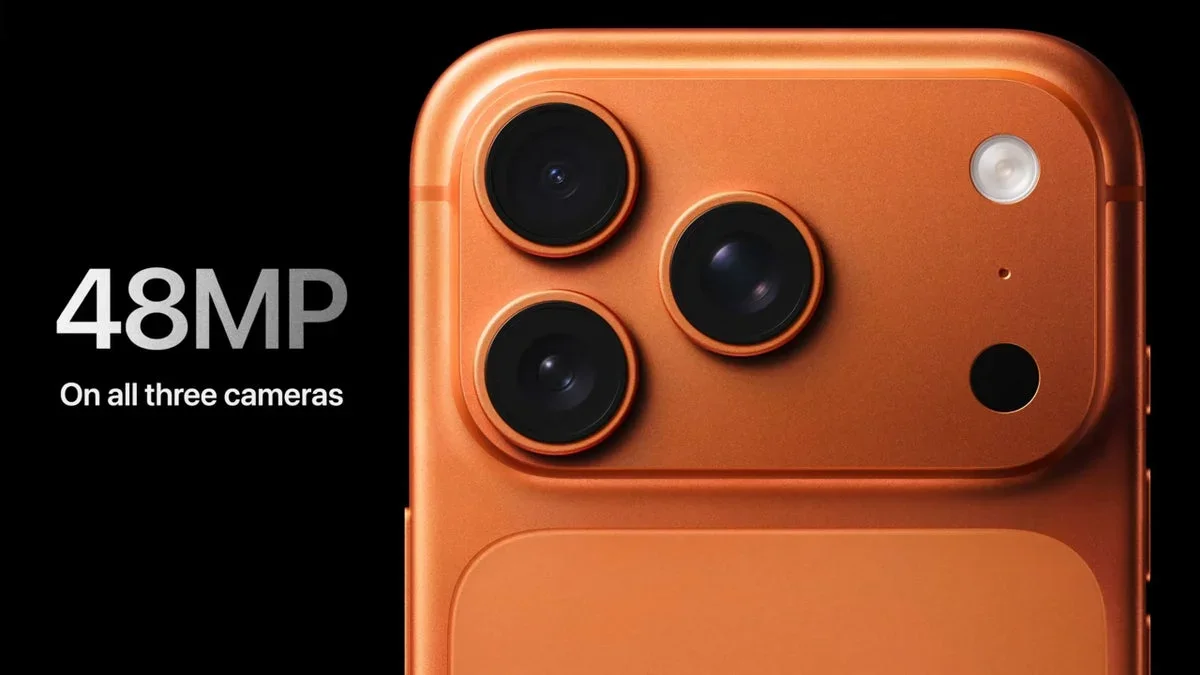We wouldn’t want Apple to rush things and mess it all up. This article contains personal views and opinions from the author.
In two years’ time, the iPhone 20 should be a fact. I expect lots of reviews, celebrations, and meltdowns to commemorate the anniversary. Only time will tell if it will be an iPhone that makes Steve Jobs proud. Until then, we have plenty of room to speculate.
It’s crazy that we’re already getting rumors about it, yet that’s precisely what’s happening: Apple may debut a giant camera upgrade with the anniversary iPhone 20.
### What’s the Story?
In short, the alleged iPhone 20, expected in 2027, could arrive with some fresh camera sensor technology. Well, as fresh as possible, given that we’re talking about tech that debuted in 2024 (and a prototype was presented in 2019) — a LOFIC sensor.
On March 18, 2024, OmniVision launched the OV50K40 sensor, the industry’s first to incorporate TheiaCel technology, which combines OmniVision’s proprietary HDR technology with LOFIC. There’s also the OV50R and the high-end 1-inch OV50X, all benefiting from OmniVision’s innovations.
### Better Late Than Never
It’s easy to pick on Apple (and I enjoy doing it) for lagging behind numerous competitors when it comes to camera tech. Or foldables. Or battery capacity. Or display brightness. Or anti-reflective screen capabilities. Or even AI, for that matter — not to mention the eye-watering prices on those devices.
Now, don’t get me wrong: iPhone photos can—and do—look amazing. Videos are even more impressive. It’s not just the iPhone Pro models; “vanilla” models like the iPhone 14 take great snaps and selfies.
But I find it laughable that Apple, a company usually in the Top 3 largest American companies by market cap, doesn’t offer more variety when it comes to camera options.
Because that’s the problem: there simply aren’t enough iOS devices to choose from if you want exotic cameras.
You’ve got the vanilla model (main + ultra-wide setup), the Pro duo (same, with a dedicated telephoto too), some older Plus models (main + ultra-wide), SE models, and the new recruits: the iPhone 16e and the iPhone Air.
The last two aren’t exactly what one would call “photography wizards.”
Meanwhile, the Android camp is (almost) fully loaded, offering quadruple camera setups with two dedicated zoom snappers, cameras with 10x optical zoom, or huge 1-inch sensors.
Some Android champions feature dedicated telephoto extenders for crazy zoom range, native 35mm focal length (instead of the much wider 23mm), 200MP sensors, variable aperture lenses, multi-spectral cameras, and physically larger pixels on their sensors.
iPhones perform great—outstanding, even in the right hands—but they kind of lack that “wow” factor when it comes to extravagant camera properties.
### Hey, What’s LOFIC? And Who Wouldn’t Want That?!
A LOFIC sensor works by giving each pixel a backup for extra light.
When a pixel receives more light than it can normally handle, the extra is absorbed by a tiny built-in capacitor instead of being lost. This lets the camera capture both the brightest and darkest parts of a scene simultaneously.
Thanks to this system, the sensor has a much wider dynamic range, meaning it can record more details in shadows and highlights in a single shot.
Some reports say LOFIC sensors can reach up to 20 stops of dynamic range, which is similar to what professional cinema cameras can do.
It’s especially useful in tricky lighting, like shooting in bright sunlight where parts of the scene are in deep shade, or indoors with bright windows.
This technology helps prevent blown-out highlights and dark, muddy shadows.
In short, LOFIC acts like a safety net for each pixel, making sure your photos retain details in both dark and bright areas.
Devices like the Xiaomi 17 Pro, Huawei Pura 80 Ultra, and Honor Magic 6 Ultimate already take advantage of LOFIC sensor technology.
### The Future Holds Lots of Camera Improvements for the iPhone
Variable apertures are another upgrade that might be coming soon.
This enhancement could bless the iPhone 18 Pro duo as early as next September.
Reports suggest Apple may introduce a variable aperture on the 48MP Fusion main camera for both the iPhone 18 Pro and Pro Max, marking the first time an iPhone would allow physical adjustment of the lens opening.
This offers users further control over exposure, enabling better low-light photos and customizable depth of field.
Previous Pro models used fixed apertures, as you know.
Leaked information also claims that both the main and telephoto cameras will have larger apertures, improving overall light performance.
### Final Thoughts
At the end of the day, yes: Apple is to blame here for lagging behind. And it should be called out for it.
But it’s exciting that some exotic camera technology is finally coming to the iPhone—even if “finally” means two years from now, and if the LOFIC sensor leak turns out to be true.
Let’s hope nothing changes in those 24 months… though, damn, that’s a long time.
—
*Subscribe to receive the latest editorials. By subscribing, you agree to our terms and conditions and privacy policy.*
*We may earn a commission if you make a purchase through links on this page.*
—
**Recommended Stories**
– FCC OKs Cingular’s purchase of AT&T Wireless
– Buy 3 Months, Get 3 Free Visible+ Pro—up to $135 savings on Verizon’s fastest 5G
Follow us on Google News for more updates.
https://www.phonearena.com/news/iphone-20-with-camera-upgrades-great-or-not_id175297


